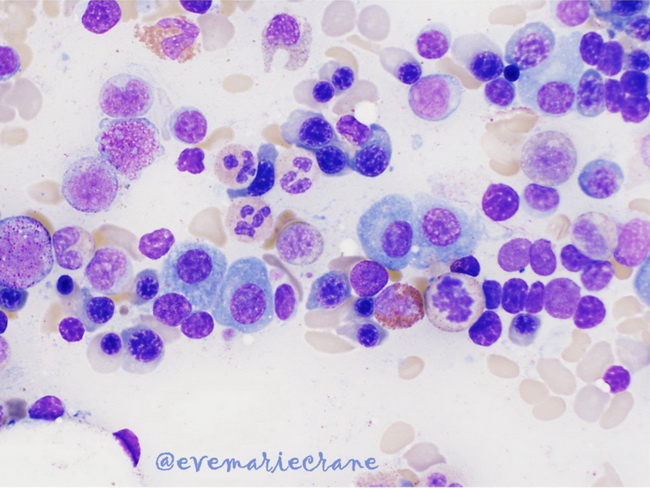Myeloma : Bone Marrow


Comments:
Role of Bone Marrow Examination: Examination of the bone marrow plays a central role in the diagnosis and management of plasma cell myeloma. The findings in bone marrow provide information about prognosis as well as patient response to therapy. Bone marrow aspirate smears and trephine biopsy specimen provide material for immunophenotyping, cytogenetics, and molecular studies. Plasma Cell Numbers:The aspirate smears show increased number of plasma cells (20% to 35%) in most cases. In about 5% of symptomatic myeloma patients, the number of plasma cells is below 10%. This may be due to suboptimal specimen or uneven distribution of tumor in the bone marrow. Plasma Cell Morphology: The morphology of plasma cells ranges from mature normal-appearing cells to highly atypical plasmablasts with dispersed chromatin and a single prominent nucleolus. This image shows several immature plasma cells in the center. The neoplastic plasma cells are usually larger in size with a bigger nucleus than normal plasma cells. The chromatin is less condensed and nucleoli are variably prominent. The cytoplasm is basophilic, moderate to abundant in quantity, and often contains vacuoles, granules, crystals, or inclusions (additional details in later slides). In 1%-2% of plasma cell myelomas, the neoplastic cells may show unusual features, including multinucleation, convoluted nuclei, and lymphoid morphology. Image courtesy of: Genevieve Crane, MD, PhD, Johns Hopkins Hospital, Baltimore, Maryland, USA.



